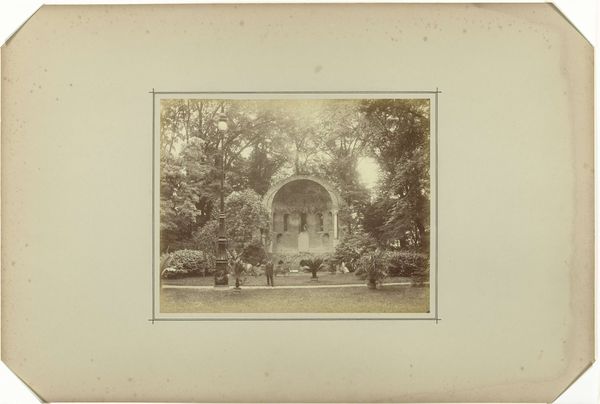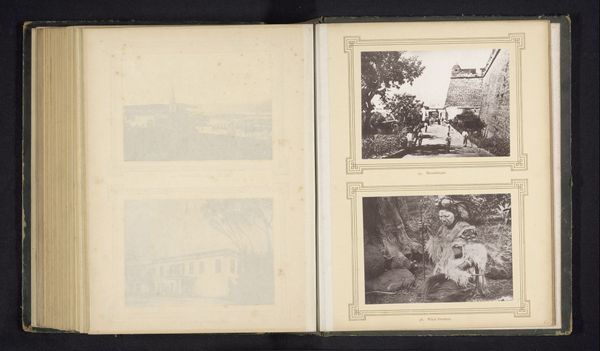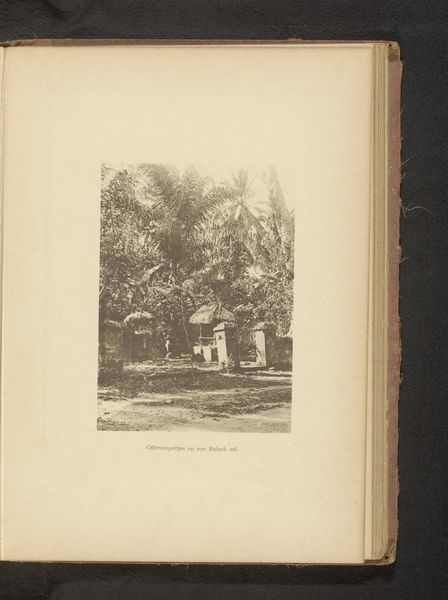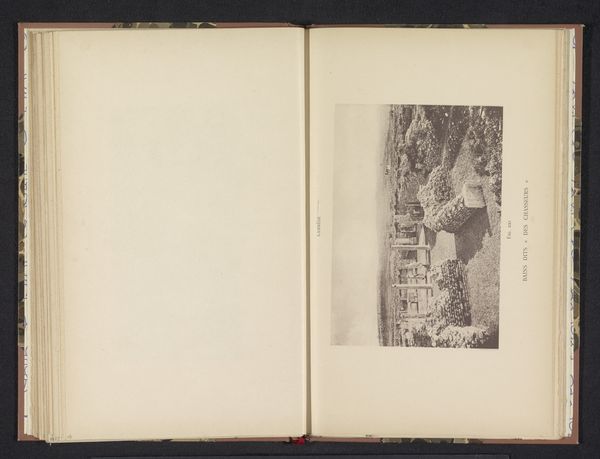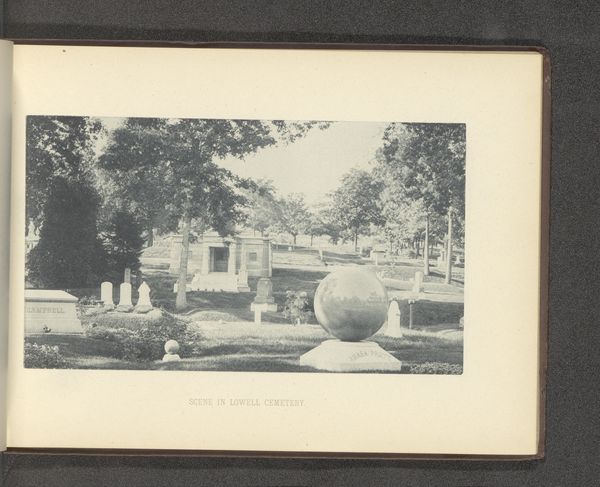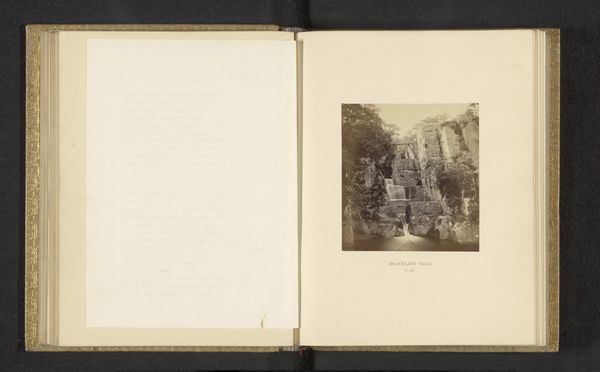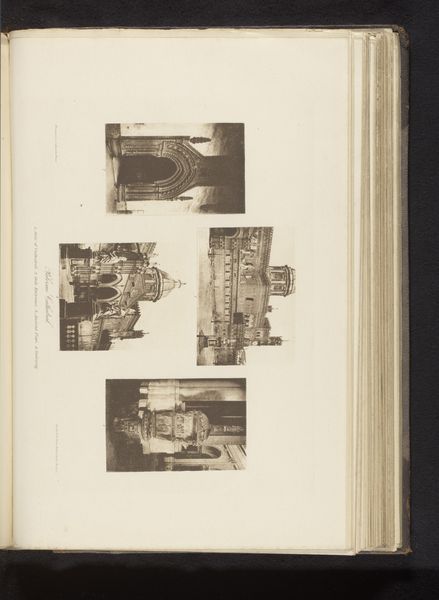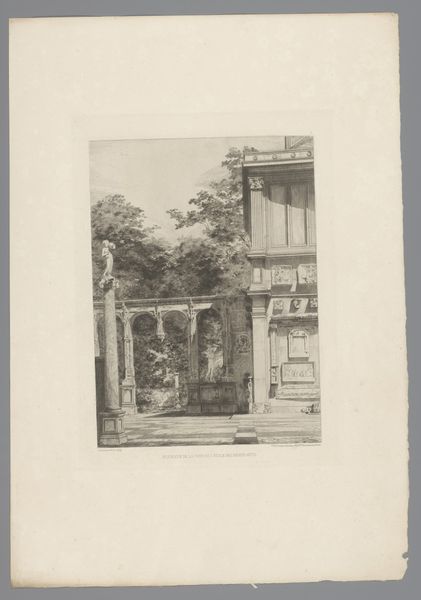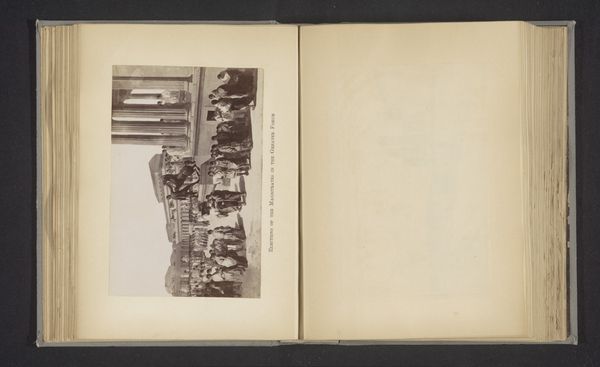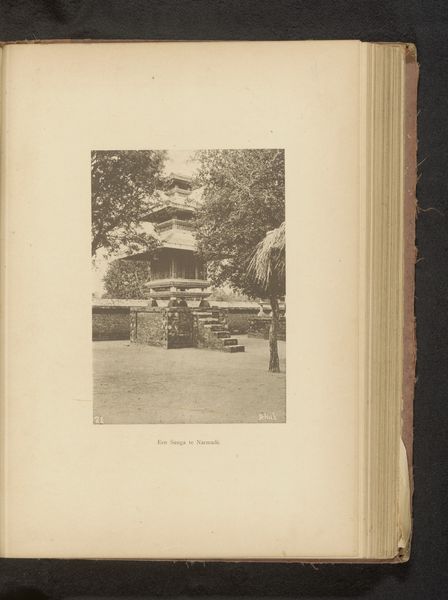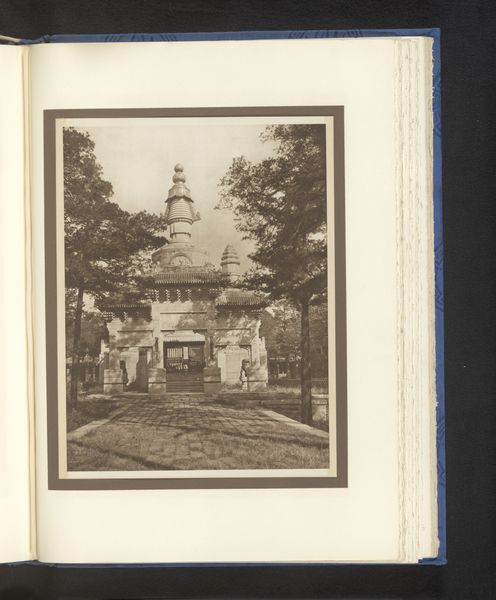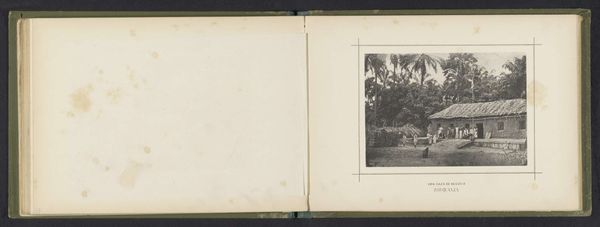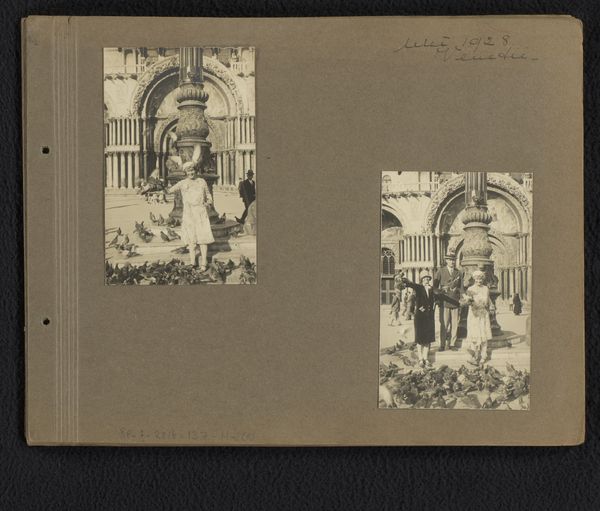
print, photography, albumen-print
#
portrait
# print
#
asian-art
#
landscape
#
photography
#
albumen-print
Dimensions: height 365 mm, width 305 mm, height 186 mm, width 242 mm
Copyright: Rijks Museum: Open Domain
Curator: Here we have "Dierentuin en portretten," a photographic print dating back to between 1864 and 1866, attributed to Woodbury & Page. It resides here at the Rijksmuseum. Editor: It feels like a fragmented window into a world, or rather, worlds—portraiture alongside landscape, each captured with stark precision. Curator: Precisely. This albumen print demonstrates the duo’s mastery over early photographic processes. Consider the material constraints: the careful chemical balancing, the extended exposure times… these are tangible details informing the aesthetic. The print showcases a deliberate process. Editor: Indeed, but let’s not forget the gaze. This photograph, depicting colonial Indonesia, offers a series of posed figures. We must recognize that the subjects’ positioning and dress speak volumes about colonial power dynamics, visibility, and representation. Curator: A critical point. The social and economic backdrop becomes particularly apparent upon considering the role of albumen itself. As an emulsion derived from egg whites, it represents both material availability and labor. Its very application highlights the making-of, as much as the ‘making’ of an image. Editor: This raises questions. Who benefits from this photographic production? Who holds the power to curate and disseminate these images? Who is being seen, how are they being seen, and to what ends? These visual artifacts played a role in constructing narratives about colonized people. Curator: I’d say the print highlights how early photography served not just as a mode of documentation but also became a medium for producing new ways of seeing and subsequently, valuing certain populations within a stratified societal framework. The very means of image-making and circulation, became the message, in turn shaping broader socio-political consciousness. Editor: Absolutely. And in understanding how identity is performed within such contexts, it is critical we acknowledge that photographs such as these can tell more about the colonizer’s fantasies, or, the aspirations embedded within the image-making, than offering any authentic view. Curator: This layered view makes the print all the richer. Editor: It does indeed. We must resist simple readings. By focusing on the confluence of context, manufacture and narrative this print is really brought into its complexity.
Comments
No comments
Be the first to comment and join the conversation on the ultimate creative platform.
